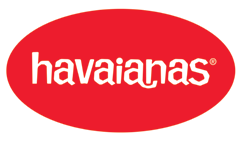Thailand’s second city is a great choice to avoid the teeming herd of tourists, and yet still quenches the thirst for culture, cuisine and shopping.

From the air, Chiang Mai is a vast valley surrounded by hills and mountains. Upon closer look, the Ping River appears, gracefully snaking up and down the endless landscape. Much like what the Nile does in Egypt, the Ping River feeds the farmland, and is the lifeline of the medieval Lanna kingdom, the northern domain of which Chiang Mai was the capital.

 Arriving in November, a week before the Loi Krathong festival, one of the two major events in the Thai calendar, we found the city in a festive mood. Loi Krathong is traditionally held during the full moon of November, and is celebrated to honor the Goddess of Water at sunset with thousands of floating banana leaves decorated with candles and flowers in the Ping River, and hundreds of paper lanterns launched in the air.
Arriving in November, a week before the Loi Krathong festival, one of the two major events in the Thai calendar, we found the city in a festive mood. Loi Krathong is traditionally held during the full moon of November, and is celebrated to honor the Goddess of Water at sunset with thousands of floating banana leaves decorated with candles and flowers in the Ping River, and hundreds of paper lanterns launched in the air.

The airport was relatively uncomplicated, we were in and out in ten minutes, and shortly thereafter, driving across the river to an elaborately carved wooden gate and entering the enclave of a magnificent ancient kingdom. Or so it seemed. There is no better way to appreciate the façade of the Mandarin Oriental Dhara Dhevi than in the dramatic hues of dusk. The first sight of multiple ornamented roof tiers can easily take your breath away, while the impressive dark wood and the warm welcoming staff in the reception area was a promising start to our four-day stay.

Designed by the local architect Rachen Intawong, the sprawling resort took seven years to build and was created to fulfill the heritage passion of a Thai tycoon. Set in sixty acres of rural farmland, the Mandarin Oriental Dhara Dhevi is a small village of its own, and our quarters for the duration of our stay was a villa overlooking the rice paddies and carabaos. Staying true to traditional Lanna architectural style, the teakwood two-story villas provided all the modern amenities mixed with artwork, artifacts and luxurious silks and textiles weaved in the neighboring hilltop tribes. In all, the complex houses 64 villas and 54 colonial suites overlooking a large pool, and an expansive array of dining choices – French at Farang Ses, Chinese at Fujian, buffet breakfast and lunch at Akaligo, an English teahouse at the shopping village called The Oriental Shop, as well as an impressive room service menu that can be served in the room or at any of the public places. For the best taste of Northern cuisine, locals and visitors go to the Le Grand Lanna where the chef uses only the freshest ingredients for a meal fit for royalty.
But the heart of the resort is the luxurious Dheva Spa, a palace on its own with 18 treatment rooms and five residences with a thick menu for pampering.

For retail therapy, Chiang Mai is a haven. The night market on Saturday is a good precursor to the more extensive one the following day. Hard- core bargain hunters won’t let both chances slip by. The Mandarin Oriental Dhara Dhevi thoughtfully provides a shuttle for their guests to the city center, a short 15-minute drive away. And if the schedule doesn’t fit, cabs are available at very reasonable rates.
The weekend night market comes alive at dusk, when wheeled carts are set up to line the streets. On Saturday, it stretches a good kilometer at Wu Lai Road, where vendors compete with existing shops in this busy commercial road known for its silverware.
The Sunday market is much bigger and located close by, at the center of the old walled city, starting at the Tha Phae Gate. Shoppers are bombarded with a huge selection of the usual knockoff T-shirts, athletic shoes, clothes, pirated CDs and DVDs; and cheap woodwork. If you haggle, you’re likely to find prices cheaper than those in Bangkok. Food stalls and fruit vendors selling kluk (a local delicacy of fresh strawberries tossed with salt and sugar) pepper the whole scene. The Sunday market is also more interesting as it showcases the art and craftsmanship of the northern tribal villages. Many of the stall vendors make and sell their own products mostly cotton and handwoven fabrics, as well as pottery, wood- carvings and metal works. To add to the festive mood, strings of colored lights and lanterns are hung all over, while musicians and puppeteers perform in the middle of the road.

For culture, Chiang Mai’s temples are much older than the ones in Bangkok, some as old as the city itself, which celebrated its 700 years in 1996. We visited the mountaintop Wat Phrathat Doi Suthep, an important pilgrimage temple with a full monastery. The 800-year-old temple is famous for its gold domed rooftops overlooking the city, and a short hop to various hill tribe villages.
For first time visitors, Chiang Mai is a place to escape to, where the sights and sounds are to be appreciated and to partake as needed, especially if you choose a luxe resort. There is no sense of urgency visitors usually get from a Thai vacation in Bangkok or Phuket. Chiang Mai is best taken with a long massage in the afternoon and night shopping. Just as the doctor ordered.
by Eva Gullas





